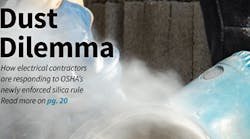Corrosive chemicals can cause severe damage to your skin. If you inhale them, they can destroy your lungs. How do you know if a chemical is a corrosive? First of all, the shipping container is always marked "corrosive" and bears the DOT sign for corrosives. The individual product container will also have this sign, so look for it.
A corrosive chemically reacts with other substances (the result is a salt) via ionic exchange. This reaction can be quite violent. The higher or lower the pH (a measure of free ions of hydrogen) is, the more dangerous the corrosive. Look for the pH on the MSDS.
The pH of pure water is 7.0, which means it’s neutral. The further the pH is from 7, the more corrosive the chemical is. Acids have a low pH; hydrochloric acid has a pH of 0. Bases have a high pH (the maximum is 14). You can feel an acid burn your skin, but with a base you can't feel the burn.


